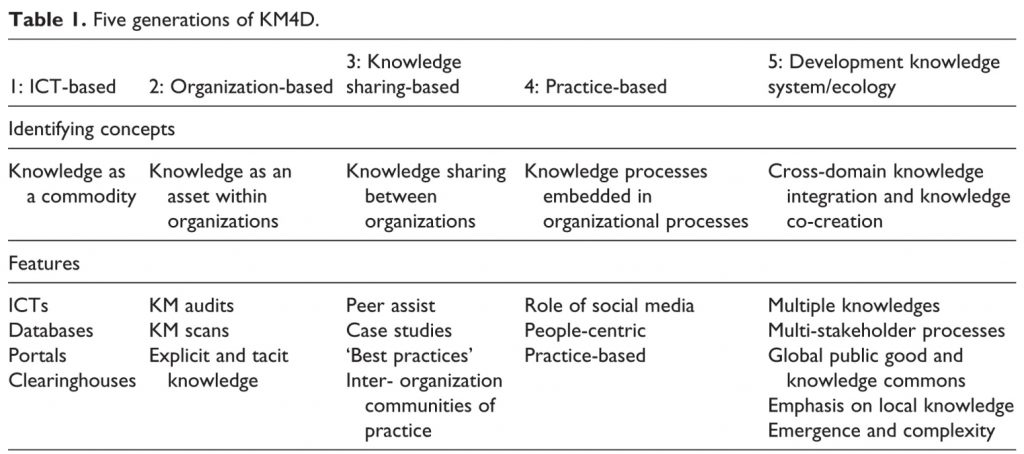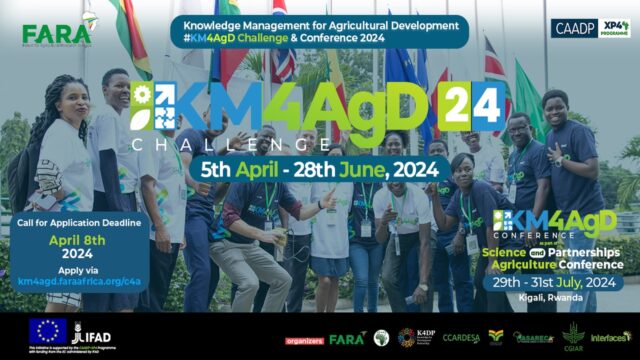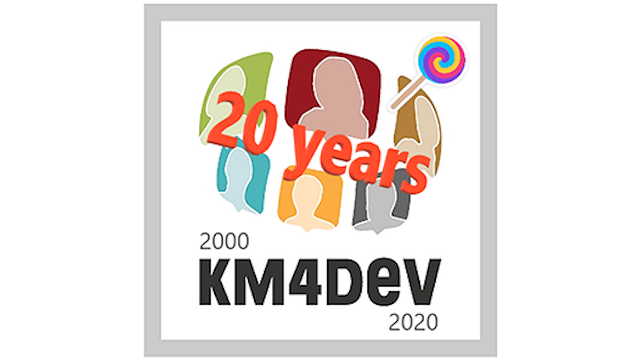
Moving towards a fifth generation of knowledge management for development
This article is part of two ongoing series of articles: stakeholder and community engagement and KM in international development.
A fifth generation of knowledge management for development (KM4D) has been proposed in a 2013 paper1 and a 2018 follow-on paper2 by Sarah Cummings and colleagues, based on generations identified from mainstream knowledge management (KM) and KM4D (Table 1).

As shown in Table 1, the identifying concept of the fifth generation of KM4D is cross-domain knowledge integration and knowledge co-creation, and its features are:
- multiple knowledges
- multi-stakeholder processes
- global public good and knowledge commons
- emphasis on local knowledge
- emergence and complexity.
Multiple knowledges and multi-stakeholder processes
Sarah Cummings and colleagues advise that multiple knowledges are enshrined in all individuals and involve individual, community, specialist, organisational and holistic knowledge. Resolution of complex, socially embedded problems involves different types of knowledge. More and more, there is an acknowledgement that the central real world issues of development cannot be solved by one party, one discipline or one type of knowledge. Understandings of multiple knowledges also call for a proliferation of different kinds of multi-stakeholder processes which are variously labelled round tables, communities of practice, platforms, partnerships and networks.
Global public good and knowledge commons
Sarah Cummings and colleagues advise that intellectual property rights are all important because they can stop the flow of knowledge and, thus, form a barrier to development. In consequence, a key feature of the fifth generation of KM4D is the concept of the understanding of knowledge as a global public good. Without the establishment of a knowledge commons, much knowledge will remain in the hands of commercial interests, protected by intellectual copyright laws and will not be accessible to for those who need this knowledge to develop.
Emphasis on local knowledge
In the exogenous paradigm of development, development is externally generated, and in the endogenous paradigm, development is internally generated. Sarah Cummings and colleagues advise that in the fifth generation of KM4D, the emphasis needs to be on local, endogenous development. This is because Development is largely the result of the synergy among the many innovative initiatives people take every day in their local societies, generating new and more effective ways of producing, trading, and managing their resources and their institutions.
Emergence and complexity
Sarah Cummings and colleagues advise that as we learn more about the nature of complex social systems, it becomes increasingly clear that ‘top down and linear’ strategies for change do not work. there is an increasing understanding that societies, economies, and ecosystems do not behave in linear and mechanical ways, rather that they are complex adaptive systems. The principles of emergence imply that over-controlling approaches will not work well within complex systems and that, in order to maximise system adaptiveness, there must be opportunity for innovation and novelty to occur. Bringing in and valuing knowledge from multiple stakeholders is a dominant feature in strategies that have complexity at heart.
Other evidence for the desirability of a fifth generation of KM4D
In proposing a fifth generation of KM4D, Sarah Cummings and colleagues have drawn on insights from the field of transdisciplinary research. Complementing this, I’ve coordinated and been involved in numerous projects in the field of natural resource management that also clearly demonstrate the desirability of the proposed fifth generation of KM4D.
One such example is the 1998-9 Sustainable Management of the Helidon Hills Project. The Helidon Hills is a large area of high conservation value native forest that was facing a range of conflicting and competing land use and management issues, and the Helidon Hills Project was highly regarded for the way in which it engaged stakeholders and the community in addressing these issues.
As I discuss in the two RealKM Magazine articles Case studies in complexity (part 6): Tacit knowledge transfer and deliberative conversations in the Helidon Hills and Case Study: How to overcome resistance and denial when engaging stakeholders, the Helidon Hills Project exhibited the identifying concept and all features of the fifth generation of KM4D:
Cross-domain knowledge integration and knowledge co-creation – The Helidon Hills Project used collaborative learning and governance processes which were responsive to the situational complexities and social context of the Helidon Hills area.
Multiple knowledges – The Helidon Hills Project drew on all scientific knowledge relevant to the area, and the knowledge of all stakeholders with an interest in the area including all landholders, all government agencies responsible for the area, and everyone in the wider community with an interest or stake in the area.
Multi-stakeholder processes – The Helidon Hills Project facilitated the input and involvement 0f multiple stakeholders, both individually and collectively, followed by bringing people with conflicting issues together to work through and resolve their concerns.
Global public good and knowledge commons – The ecological, land planning, and other information used and generated in the project was made public knowledge and openly shared with everyone.
Emphasis on local knowledge – The collaborative learning and governance processes of the Helidon Hills Project emphasized local knowledge, and local knowledge was the foundation of the win-win solutions developed to identified issues. This enabled landholders and the community to feel a sense of ownership over the solutions.
Emergence and complexity – The Helidon Hills is a highly complex landscape, having both public and private land tenures and a wide diversity of land uses and land management practices, some of which are competing or in direct conflict with each other. The collaborative learning and governance processes of the Helidon Hills Project allowed issues of concern and potential solutions to readily emerge.
Research in the natural resource management field also endorses the desirability of the proposed fifth generation of KM4D. For example, one of the papers discussing the fifth generation of KM4D states that (p. 23)3: “This [fifth] generation of KM4D is characterised by … [factors including] a growing awareness of multiple knowledges and multi-stakeholder processes in the solution of ‘wicked problems’ [and] recognition of the importance of complexity and emergence.” Reflecting this, Harding, Hendriks, and Faruqi4 advise that many environmental issues can be described as wicked problems, where complex interconnected ecological and social factors and uncertain contexts and boundaries make the issues very difficult to resolve, and that participation processes for environmental decision-making must be effective and appropriate, with higher levels of participation for issues that are more complex or controversial.
This complementary evidence confirms that the proposed fifth generation of KM4D should be very actively supported by the KM community.
Wider benefits of the features of a fifth generation of KM4D
In an article earlier this year, I called for better open, inclusive, participatory processes in KM generally, beyond just KM4D, in response to the controversy that erupted when the draft of the new ISO 30401 KM standard was released for public review and comment.
The features of the fifth generation of KM4D parallel the approaches that I described in my article, meaning that the fifth generation features have wider application than just KM4D. This means that as well as supporting the fifth generation of KM4D, the KM community should consider how its features can be reflected in general KM practice.
Article source: The future of knowledge brokering, perspectives from a generational framework of knowledge management for international development is licensed under CC BY-NC 4.0.
Header image caption and source: Government, university, rural industry group, and community members share knowledge about sustainable landscape management during the 2009-11 Hawkesbury-Nepean River Recovery Program. Image by Bruce Boyes, published under CC BY 4.0).
References:
- Cummings, S., Regeer, B. J., Ho, W. W., & Zweekhorst, M. B. (2013). Proposing a fifth generation of knowledge management for development: investigating convergence between knowledge management for development and transdisciplinary research. Knowledge Management for Development Journal, 9(2), 10-36. ↩
- Cummings, S., Kiwanuka, S., Gillman, H., & Regeer, B. (2018). The future of knowledge brokering, perspectives from a generational framework of knowledge management for international development. Information Development, https://doi.org/10.1177/0266666918800174 ↩
- Cummings, S., Regeer, B. J., Ho, W. W., & Zweekhorst, M. B. (2013). Proposing a fifth generation of knowledge management for development: investigating convergence between knowledge management for development and transdisciplinary research. Knowledge Management for Development Journal, 9(2), 10-36. ↩
- Harding, R., Hendriks, C. & Faruqi, M. (2009). Environmental Decision-Making: Exploring complexity and context, The Federation Press, Sydney. ↩






